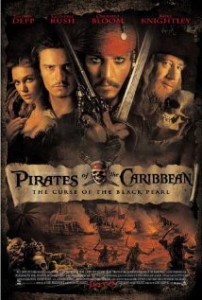I’ve played the first three Halo installments and still consider it to be the best video game I’ve ever experienced. I must admit that I had to hang up my blasters when time management became a challenge, but there are times when I consider breaking out the old Xbox and “blasting me some Covenant troops.”
There’s a reason I still remember Halo fondly. It’s the same reason that the franchise is still going strong, but it may not be the reason you’re thinking of.
I remember watching an infomercial for Halo 2 back in 2004. One of the developers at Bungie Studios said something that has stuck with me ever since. What he said was true, but I’m going to caveat the hell out of it to make a point about the success of the Halo franchise.
Basically, this techno-weenie (an incredible gifted one, I might add) said that if you can make 30 seconds of combat be fun over and over again in a video game, you basically have a winner. He couldn’t have been more right. If you look around you’ll find plenty of examples for this little business model, including Counterstrike, Aliens vs. Predator, and WoW to name just a few. But Halo is the bar in both popularity and raw monetary revenues that virtually all other video game companies strive for.
Most people would just say it’s an epically awesome first-person-shooter, and they’d be right. However, something set Halo apart—something intrinsic to the game that turned it into a multi-billion-dollar franchise still going strong after nearly fourteen years.
Story and character.
Halo is set upon a galactic stage of epic scale, with first humanity and then all sentient life cast in the balance should our hero fail in his objectives. What’s more, players really get a sense of tremendous scope as the storyline unfolds. There are fantastic, deep-space cut-scenes, incredibly detailed starships, and brilliantly created alien settings that literally suck you into the story before you know what’s happened to you. And it is upon this stage that players experience a truly fantastic story. It’s what they call in the literary world are real “page turner.”
In a nutshell, Covenant troops are doing their best to wipe out humanity as part of a religious crusade, and it takes almost no time at all for gamers to become totally immersed in the conflict. The protagonist is Master Chief, a cybernetically enhanced and fully armored soldier, who must almost single-handedly stop them. The Master Chief dashes, tumbles, leaps, or flies from one firefight to the next… over and over again.
That’s what the techno-weenie was referring too. There’s an assortment of wicked-cool weapons and uber-awesome vehicles. The basic action of the game is fairly straightforward, but never gets old.
If the game had been left at just that, it would have been very successful, but as far as I’m concerned, Bungie took the whole thing to the next level. They did it not with CGI or harder levels or even any sense of “leveling” the Master Chief. They did what I wish all game design companies would incorporate. They created a story that rivals any epic sci-fi novel I’ve ever read.
To begin with, there’s a sense of discovery built into the storyline that appeals to what must be nearly the hundredth percentile of gaming geekdom. Behind all the action—behind the Covenant and traversing the galaxy—are the Halo rings. It’s this sense of mystery that makes Halo a step above other gaming storylines. Not only must Master Chief beat up on the Covenant—which is tons of fun, by the way—he must discover what Halo rings are, what they’re for, who built them, and why.
Which leads us to The Flood.
Bungie didn’t stop with just shooting Covenant. They decided to throw a real monkey-wrench into the works. The Flood is an alien, zombie-like life form that, if loosed upon humanity, could wipe us out indiscriminately. In just one cut-scene, the whole story takes remarkable sci-fi action and adds a horror element that ups the stakes considerably. Tension just oozes from the three-way antagonism inherent in the Halo universe.
That’s a huge part of why this game has been so successful. Bungie (and later Microsoft) has consistently upped the tension and scale of the story. There’s always something new—something exciting or horrific—just around the next corner.
GENIUS.
This is what good storytelling is all about—constantly upping the stakes and making it all plausible as you go along. And the Halo franchise does just that… in spades.
The last caveat worth mentioning here, and it’s a big one, is the characterizations within the story. For starters, the Master Chief is an exceptional protagonist for the story. He’s the nearly indestructible super-hero whose vulnerabilities leave just enough risk to keep things interesting. He’s the stoic, lone-gunman in space, who must face insurmountable odds over and over again out of a sense of duty. I mean, who doesn’t love the honor-bound hero who has no interest in monetary gains?
But Master Chief isn’t alone. He’s assisted by Cortana, a rather voluptuous AI who rides shotgun and scopes out some of the more technical bits of conflict that the Master Chief must face. However, she does serve one other critical function of a more literary nature. She’s easy-access to the deep back-story of the Halo universe, something that every good tale needs. Through her, the Master Chief discovers a lot of what’s going on behind the scenes. She is both his “right hand” and the “investigator” portion of the story. Cortana allows gamers gets quick info dumps about the history and scale of the universe that Bungie continues to expand upon, and does so without wrenching the player out of the storyline.
Again, GENIUS.
In Halo 2, Bungie even upped their game from a characterization perspective. They made the “first person perspective” not only that of the Master Chief, but also a renegade Covenant soldier who is committed to bringing down the Covenant leadership. In one fell swoop, they increased the level of storytelling, created a “sympathetic villain,” and expanded the scope of who and what the person behind the game controls experiences.
Bungie got literally everything right with this game. The nailed the action part, which hasn’t really changed much in the past 14 years, and created a compelling, intriguing and multi-perspective set of characters that make for hour after hour after hour of fantastic gaming experience.
The story, hands down, has some of the very best tools and tricks that keep readers/gamers interested. We are taught from the get-go that there’s always just a little bit more to learn. We come to expect these new discoveries, and thus far we haven’t been let down.
That is why the Halo franchise continues to be best in breed.
The success of Halo is something each and every writer should take notes from. Play this game, from start to finish. Pay attention to story and characterization. Watch how the chapters are laid out and how the designers/writers keep upping their game to keep you riveted to the couch and the controller in your hands.
And when you’ve done all that, apply it to your writing. If you do, you’ll be writing better stories with better characters. More importantly, readers will want to turn those pages till the wee hours of the morning to get to the end… and buy the next installment.



